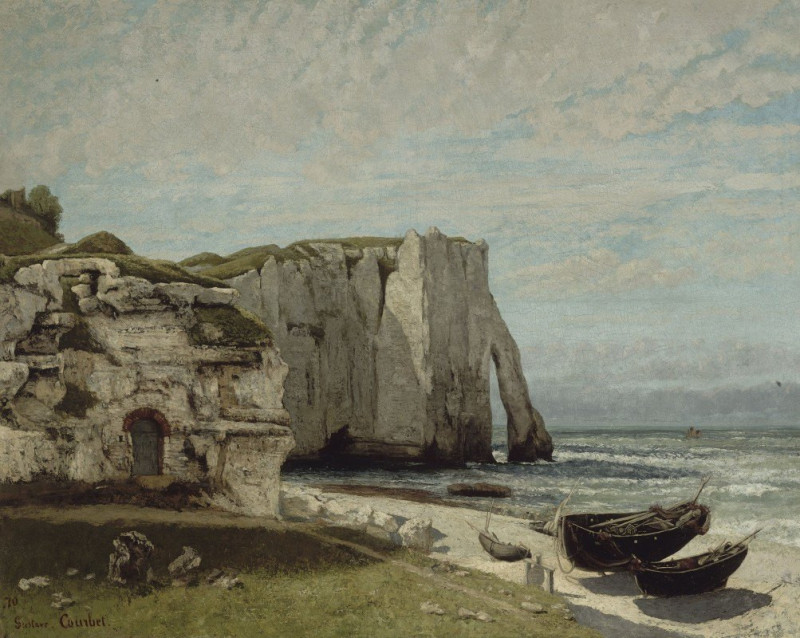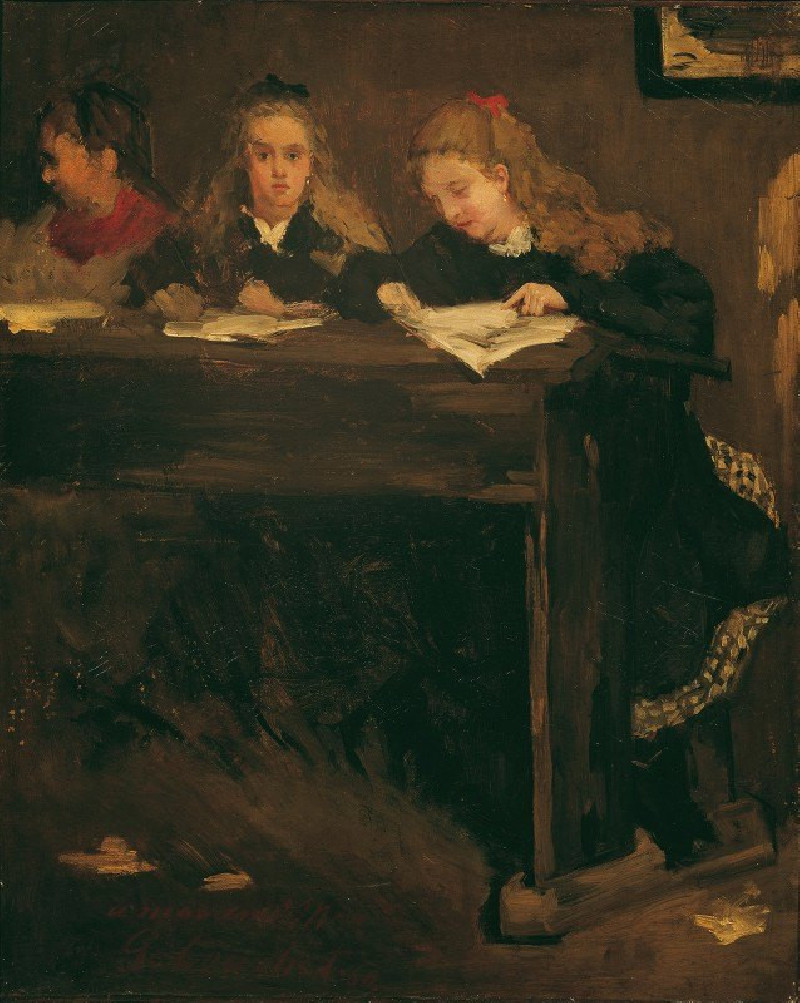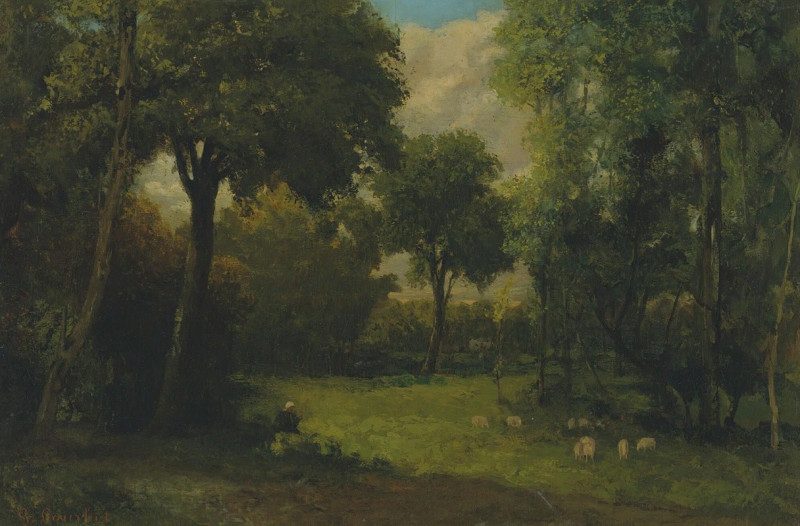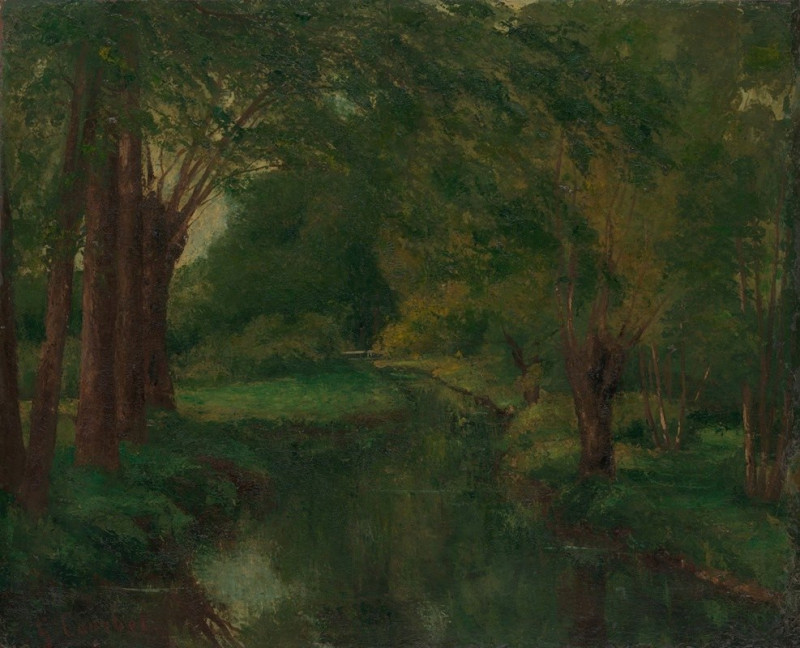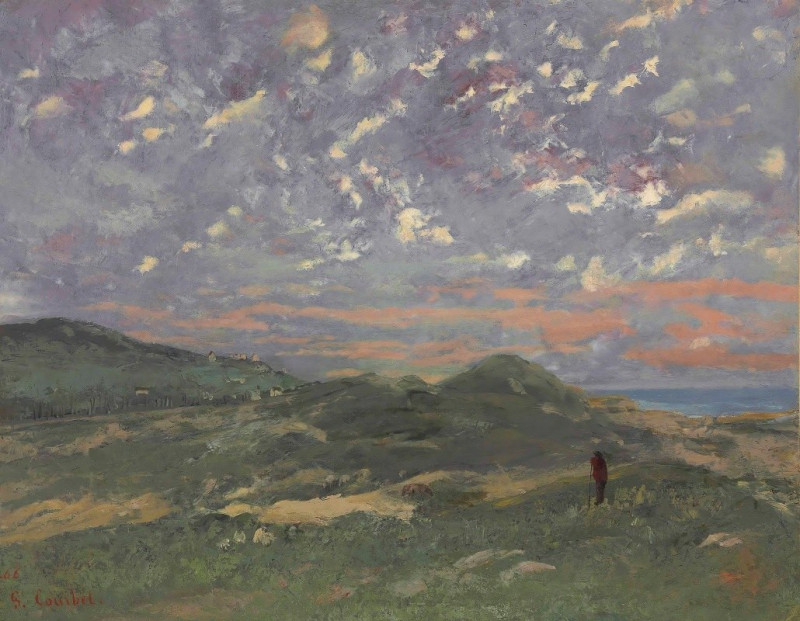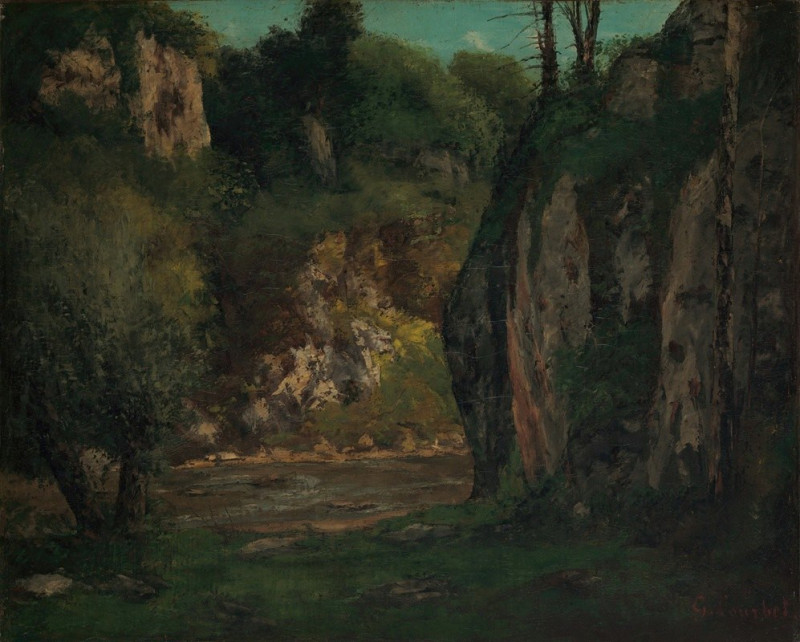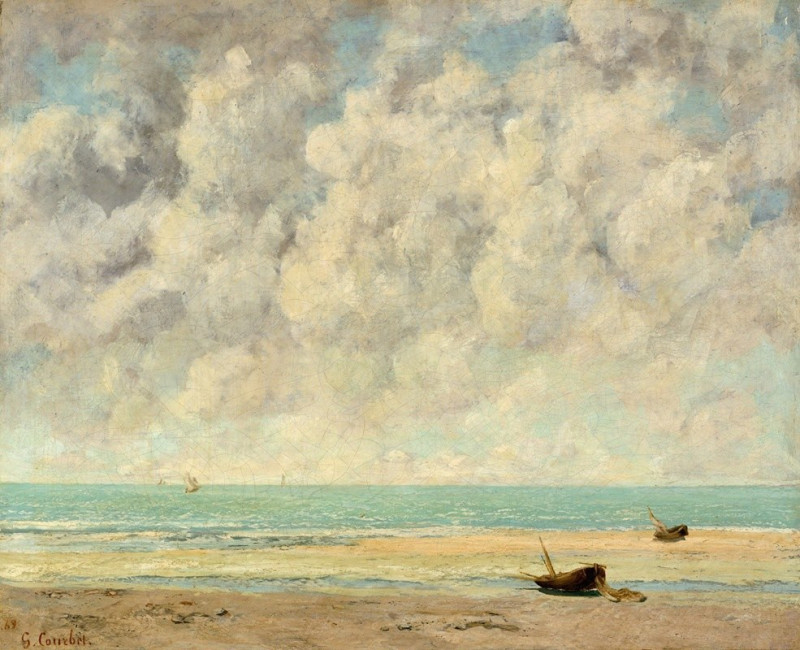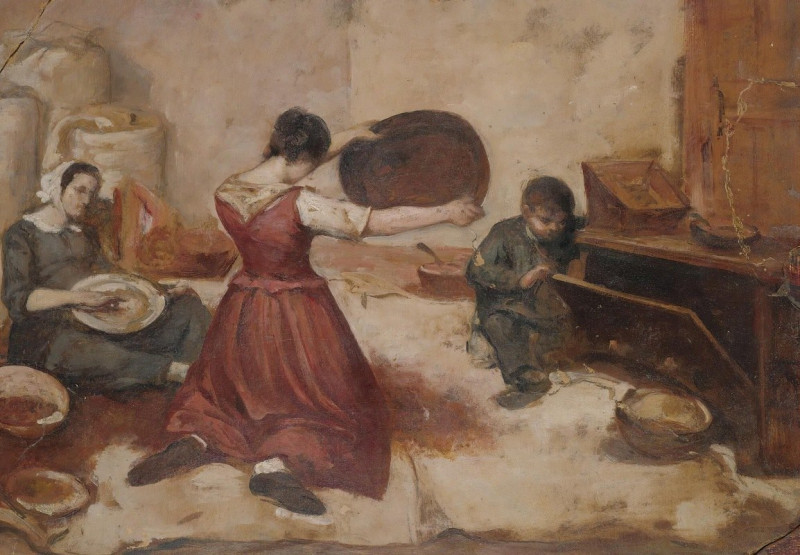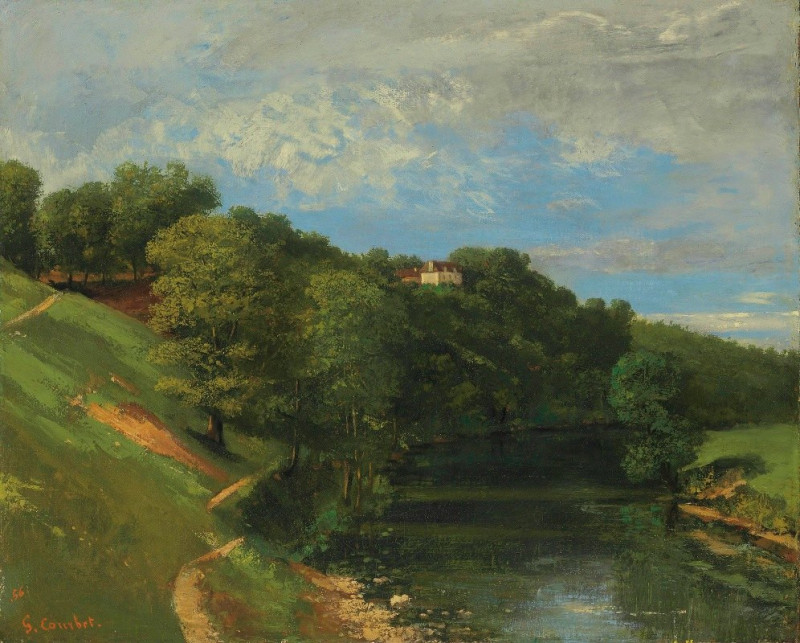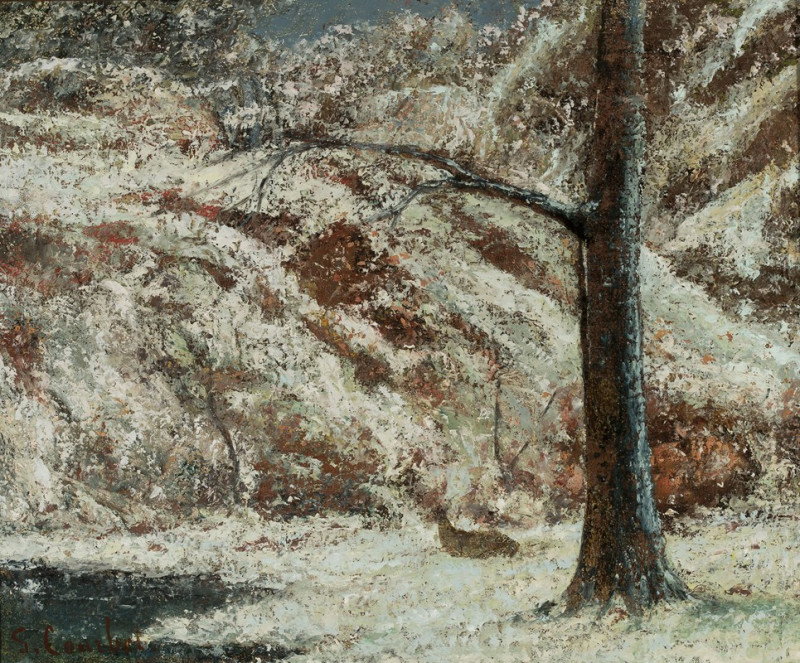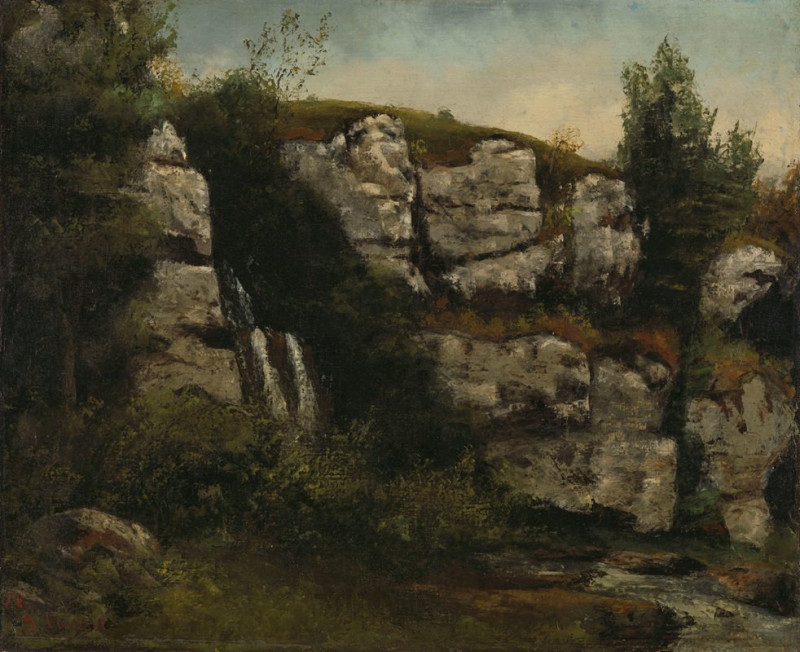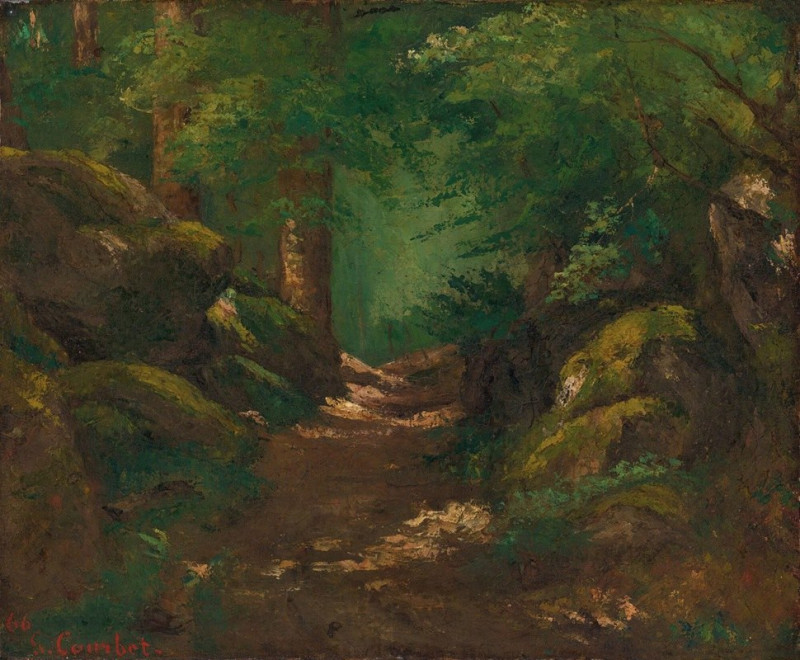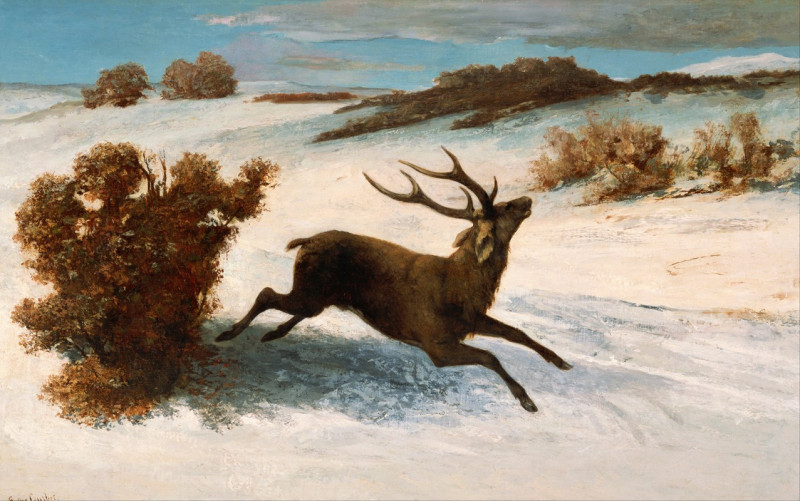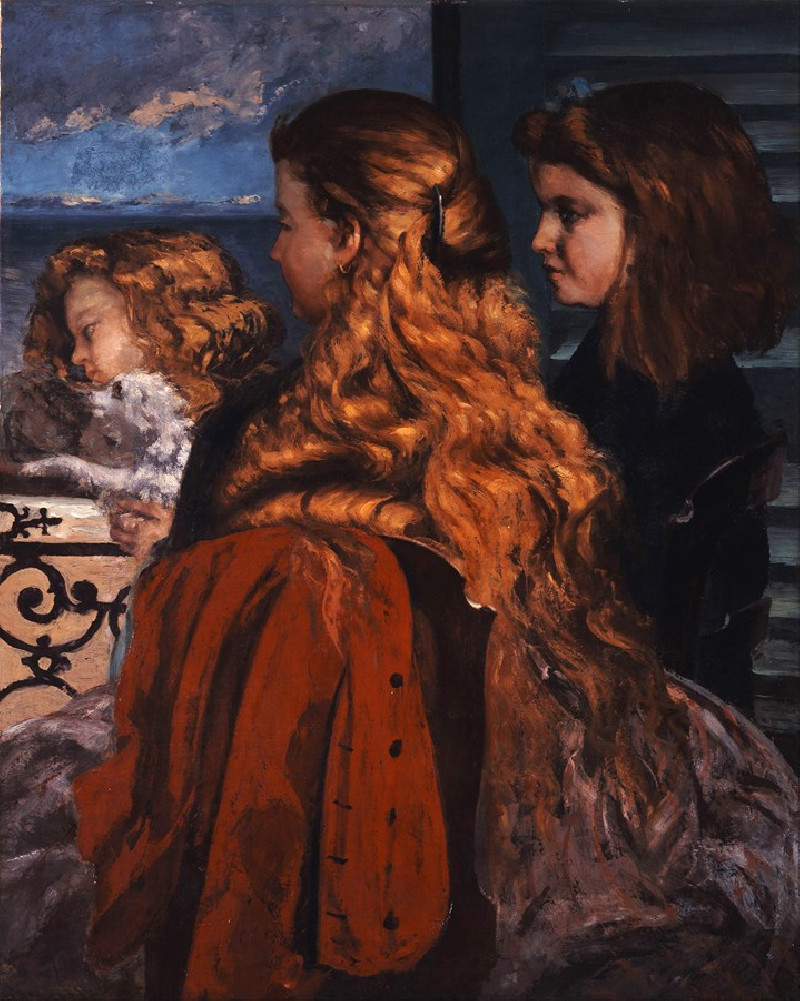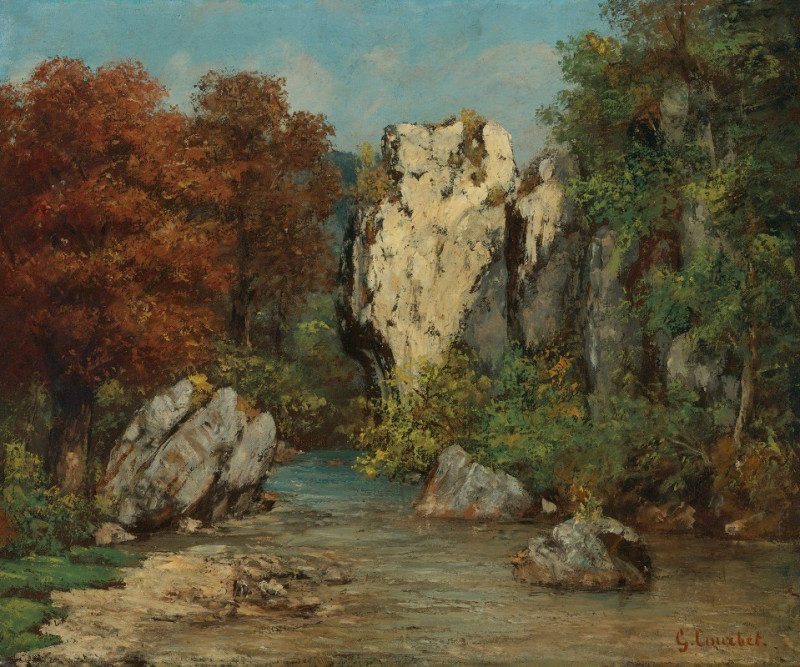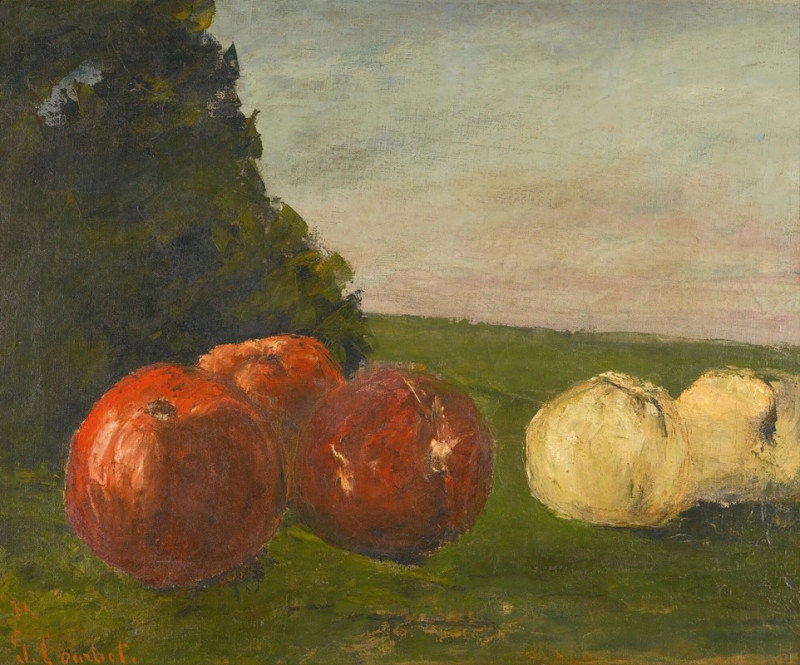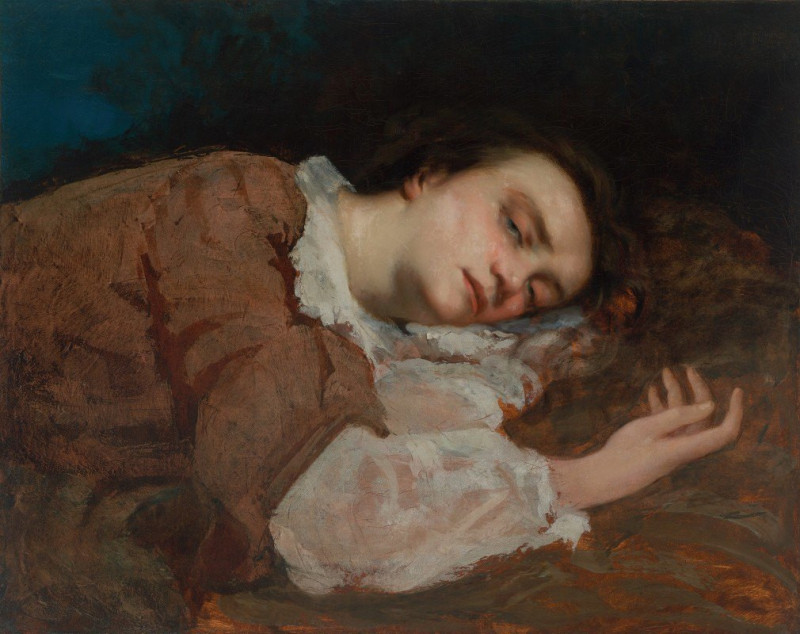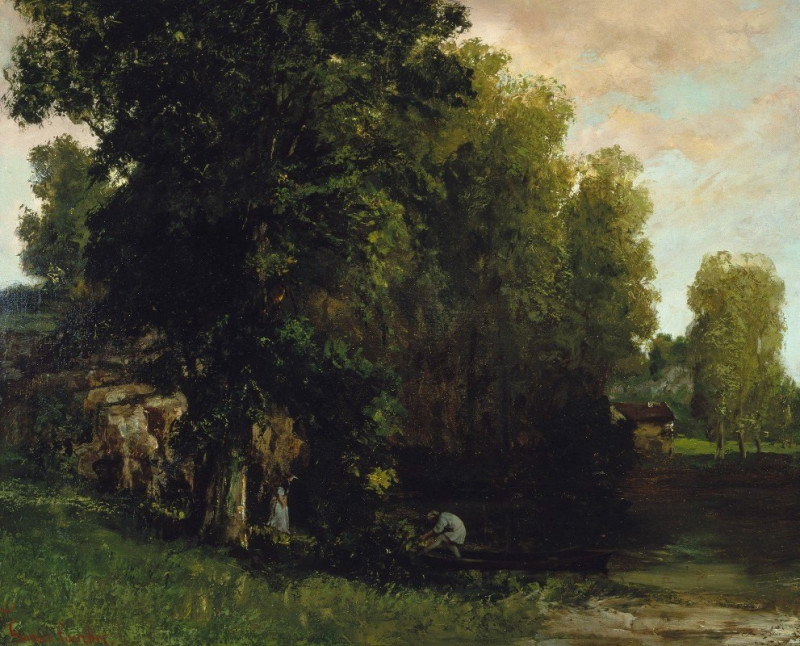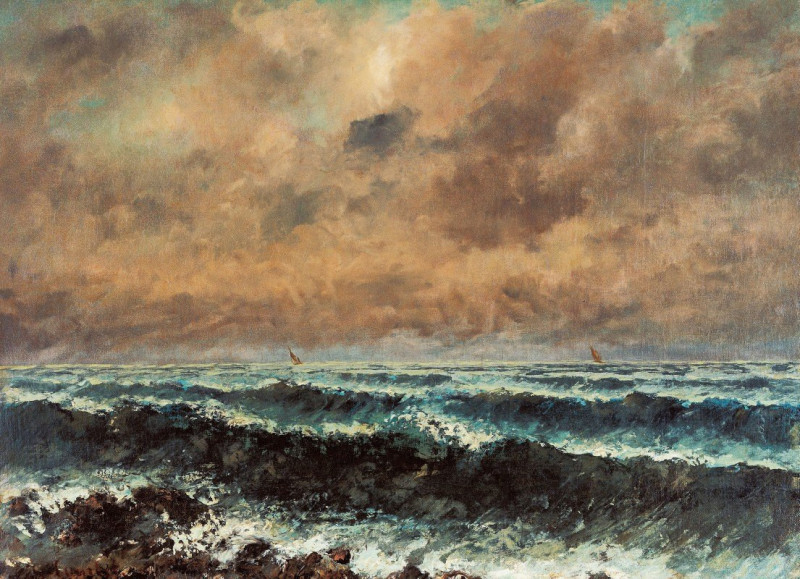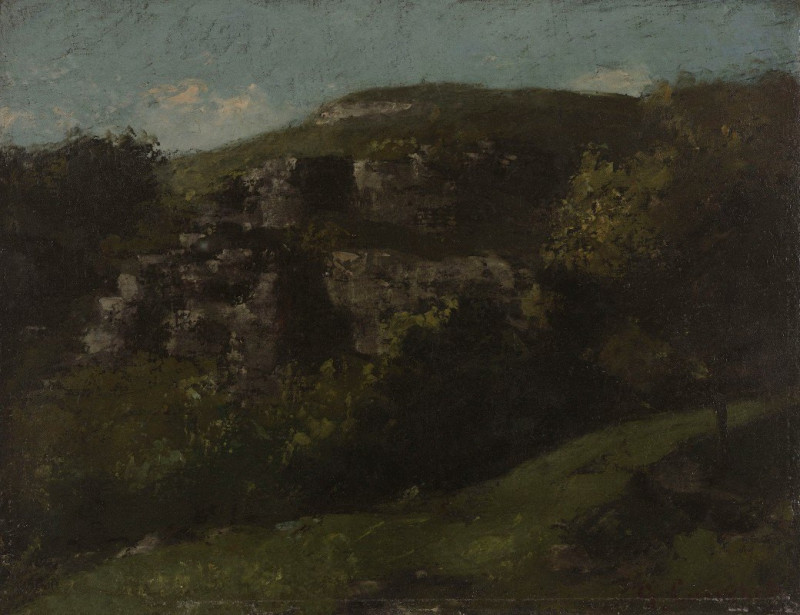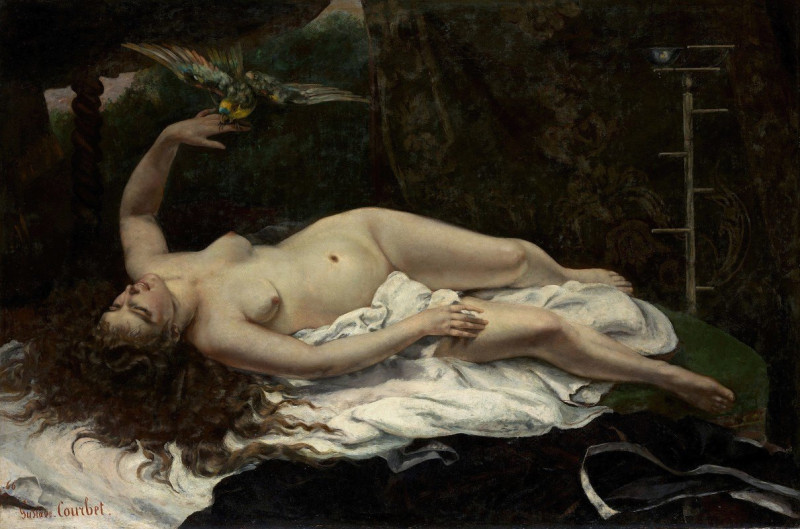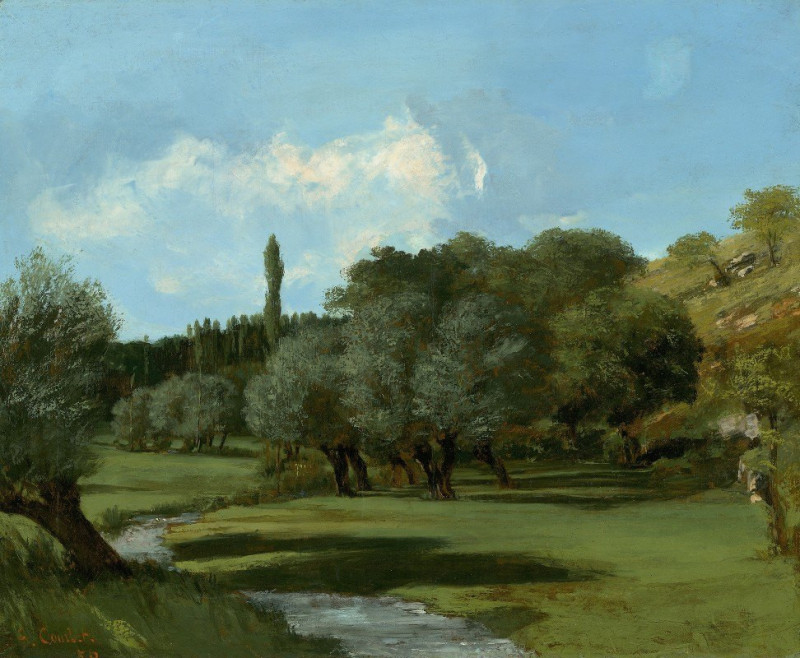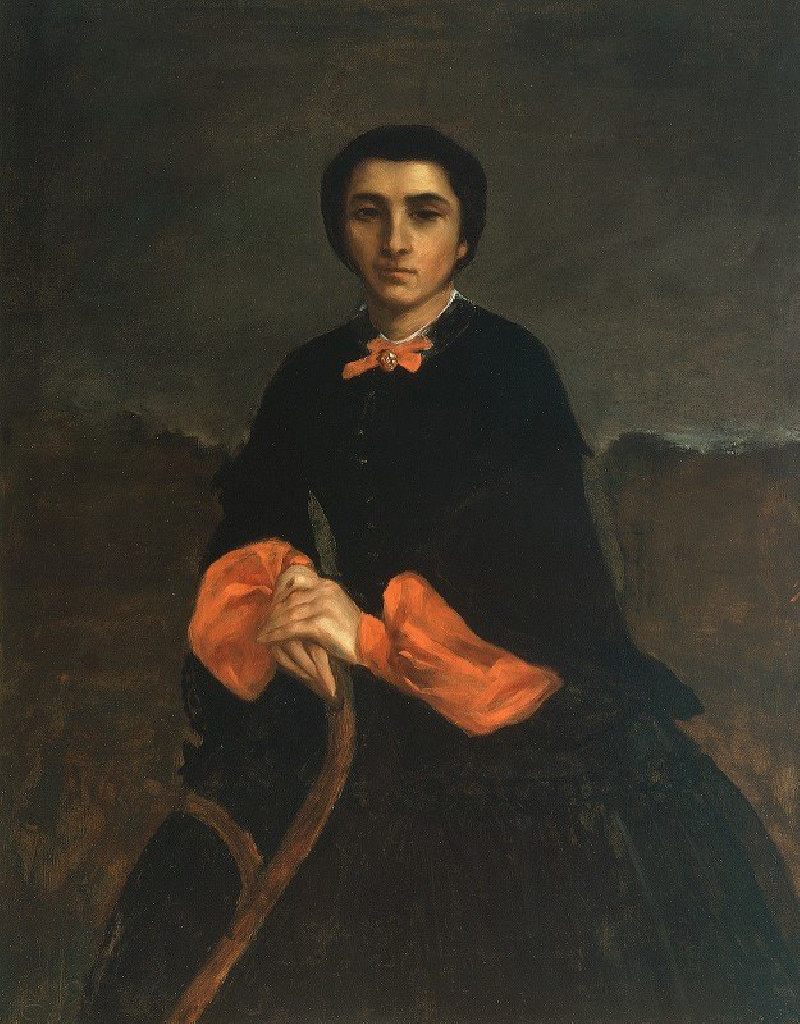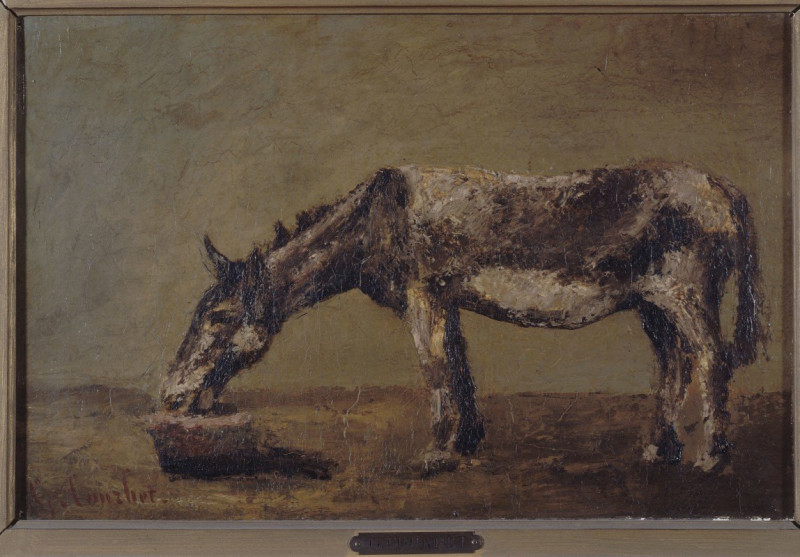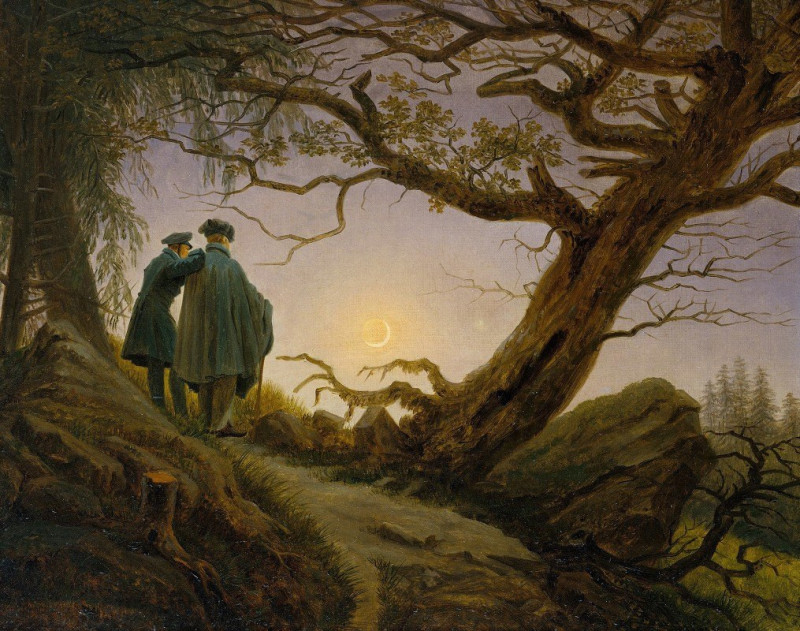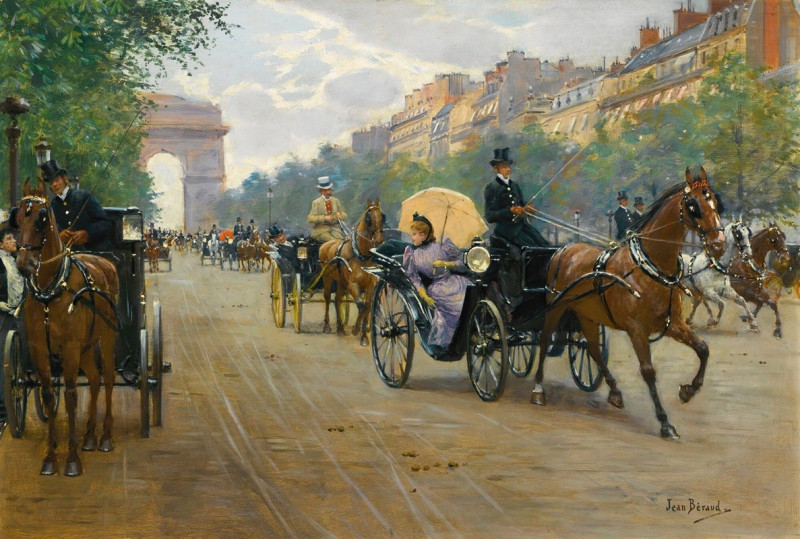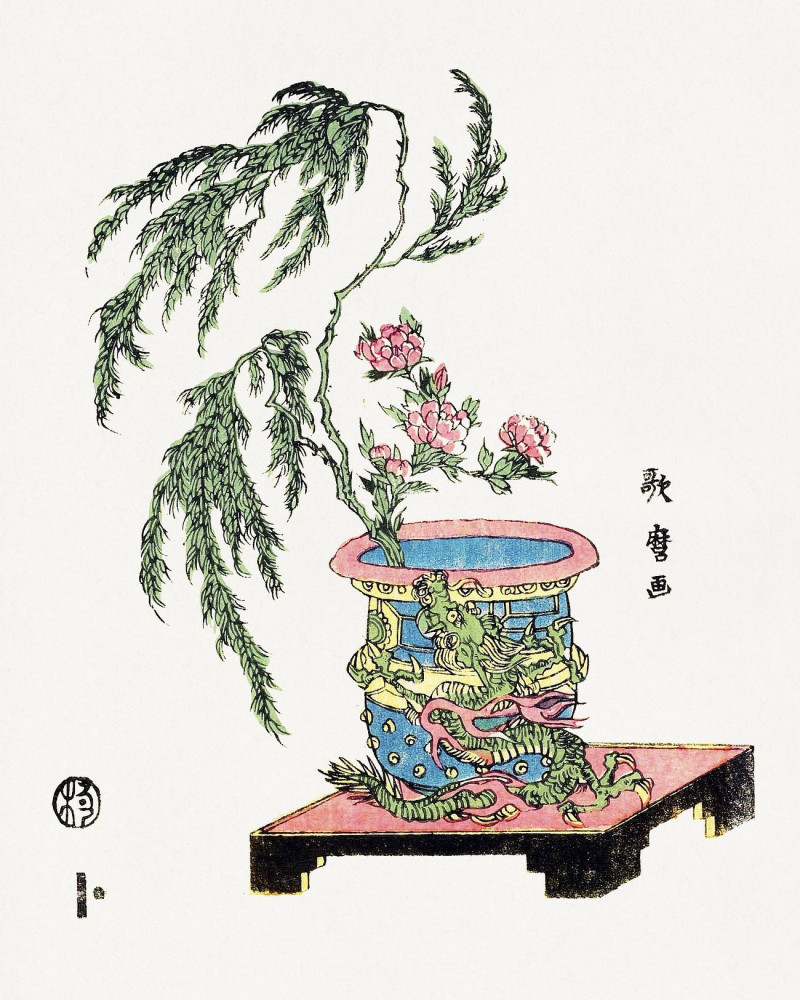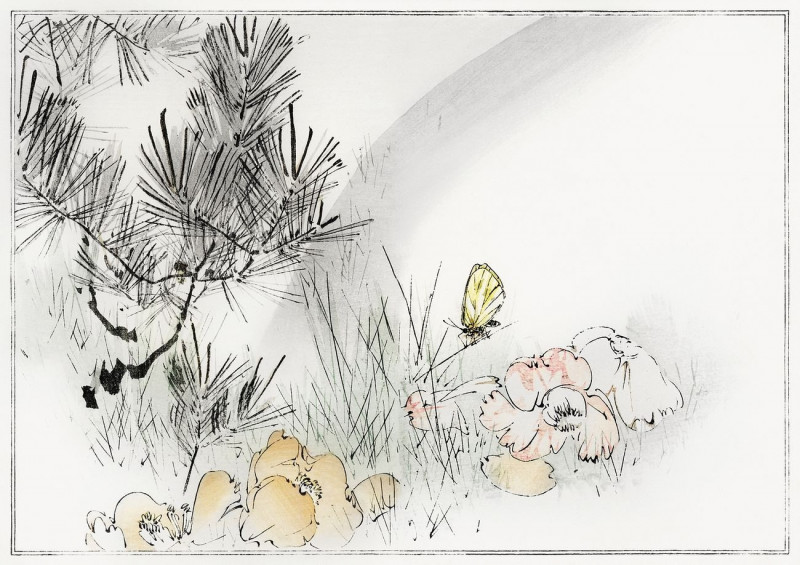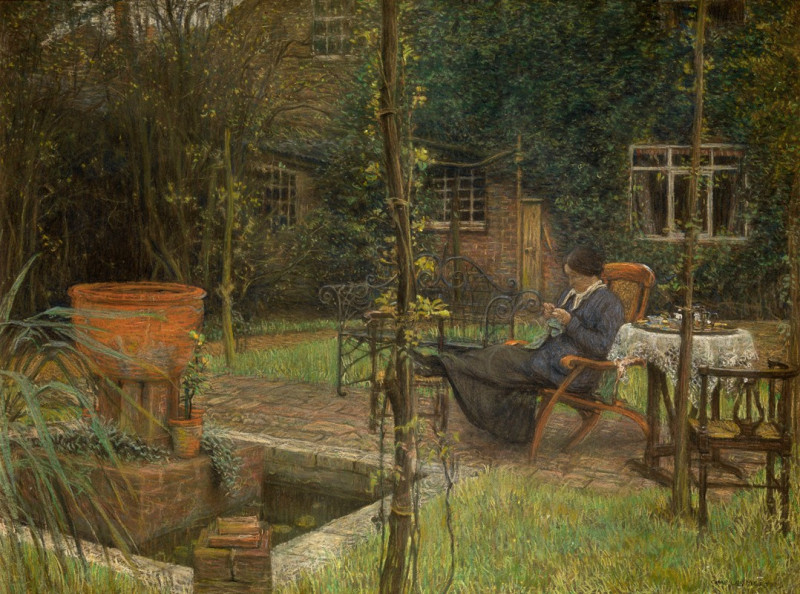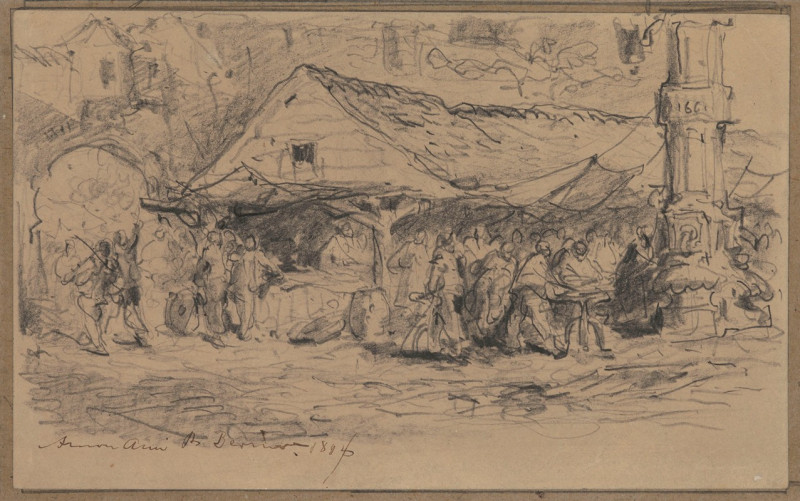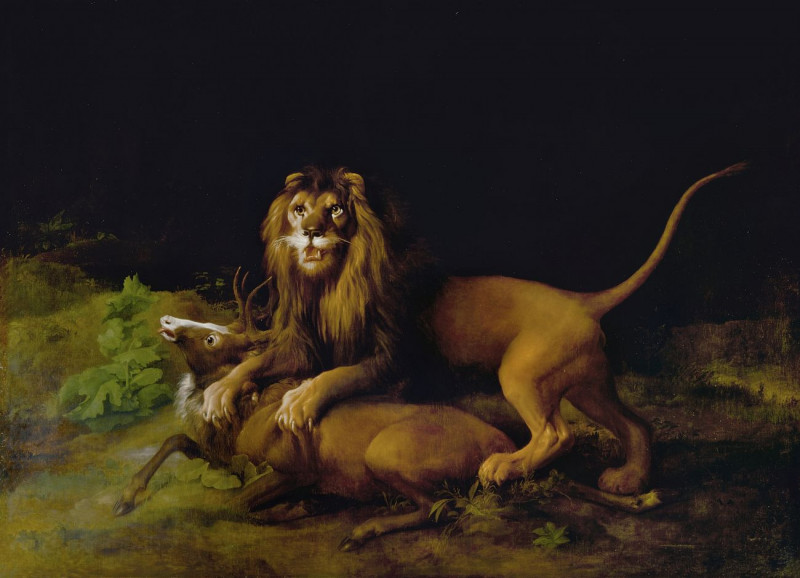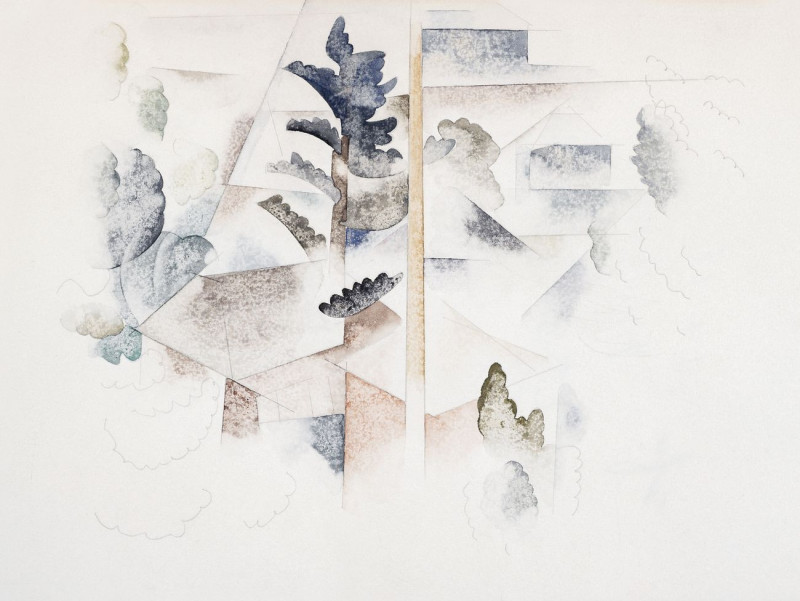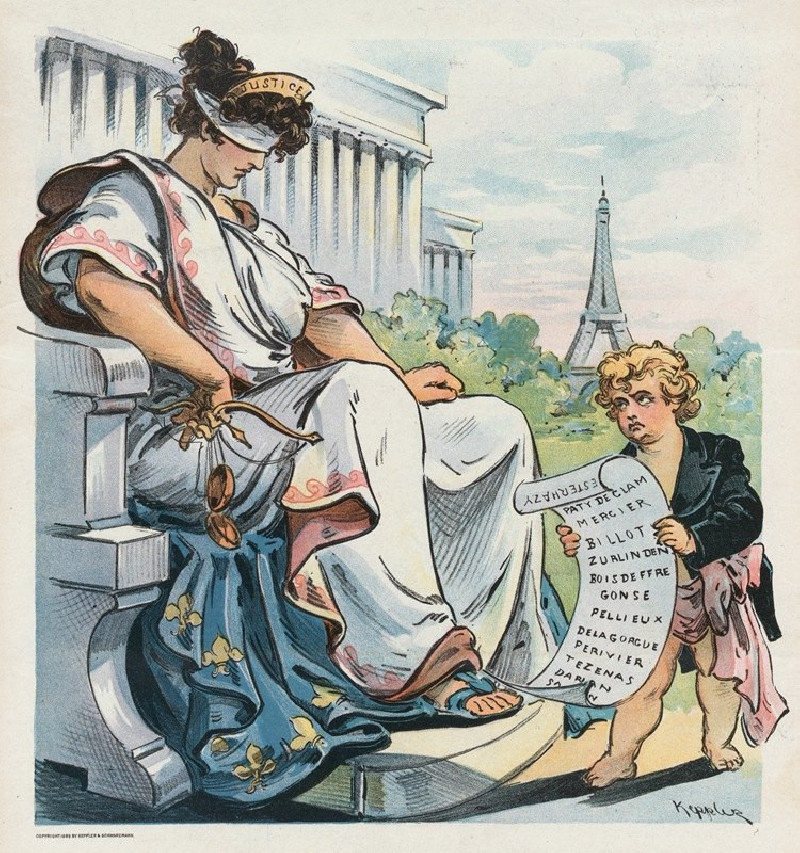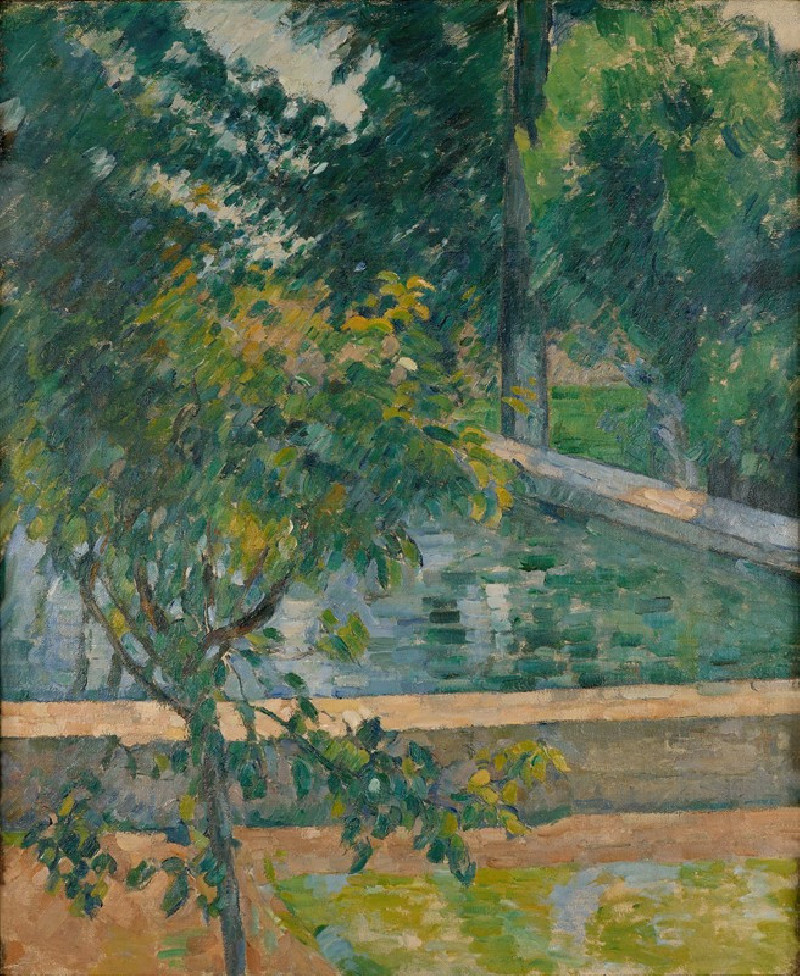The Etretat Cliffs after the Storm (1870)
Technique: Giclée quality print
Recommended by our customers
More about this artwork
This stunning oil on canvas painting captures the serene aftermath of a storm at the Étretat Cliffs, masterfully rendered by Gustave Courbet in 1870. The work beautifully presents the rugged limestone cliffs of Étretat in Normandy, France, a favorite locale of the artist, much known for its dramatic natural archways and towering stacks.In "The Étretat Cliffs after the Storm," Courbet portrays a tranquil yet powerful scene filled with contrast and textural depth. The dramatic cliffs dominate the right side of the composition, with their sharp vertical lines and formidable forms, a testament to nature's sculptural power. In contrast, a softer landscape is noticeable on the left with gentle slopes and hints of greenery, complemented by a quaint stone building with a red door, partially embedded into the hillside.Three fishing boats lie beached on the shore in the foreground, hinting at the human element and the ongoing interaction between man and nature. The sea, depicted in varying shades of blue and green, still carries the energy of the recent storm, while the sky overhead stretches out in a calming pattern of fluffy, white clouds dispersed against a pale sky.Every brushstroke in Courbet's work brings out the rugged beauty and vitality of this coastal scene, inviting viewers to ponder the perpetual dance between earth and water, calmness and chaos. This painting not only showcases Courbet's skill in depicting natural landscapes but also resonates with his love for scenes unscathed and shaped by nature's own hands.
Delivery
Returns
Jean Désiré Gustave Courbet (10 June 1819 – 31 December 1877) was a French painter who led the Realism movement in 19th-century French painting. Committed to painting only what he could see, he rejected academic convention and the Romanticism of the previous generation of visual artists. His independence set an example that was important to later artists, such as the Impressionists and the Cubists. Courbet occupies an important place in 19th-century French painting as an innovator and as an artist willing to make bold social statements through his work.

